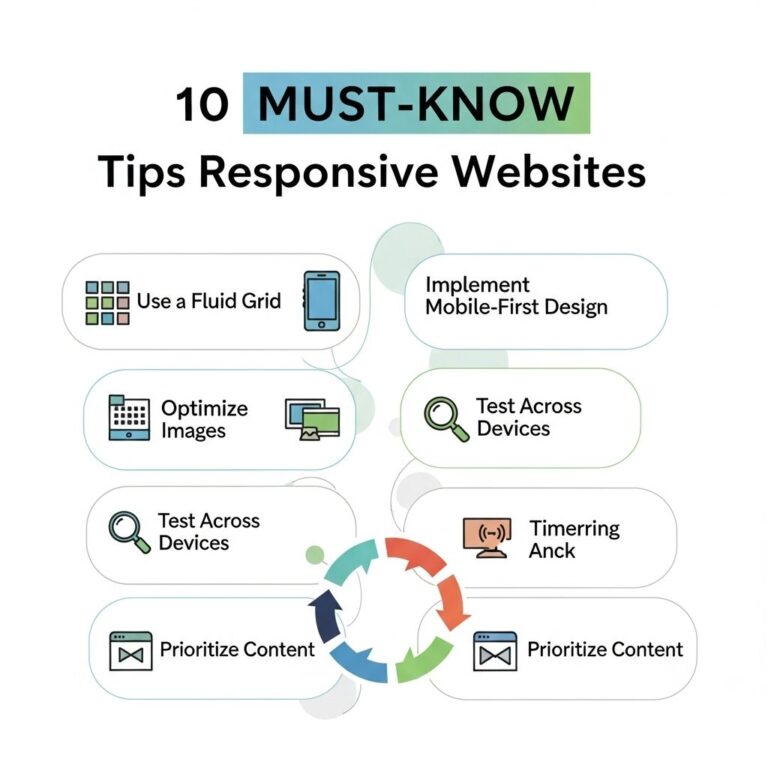The digital landscape continues to evolve at a rapid pace, with web design trends emerging that reflect changes in user behavior, technology advancements, and aesthetic preferences. As we look ahead to 2025, several key trends are shaping the future of web layouts, aiming for enhanced user experience, interactivity, and visual appeal. This article delves into these trends, providing insights into what we can expect and how businesses can adapt to stay ahead of the curve.
Table of Contents
Simplified Navigation Structures
With users becoming increasingly overwhelmed by complex navigation systems, streamlined approaches are gaining traction. Simplified navigation enhances accessibility and improves user engagement. Key elements include:
- Minimalist Menus: Reducing the number of options presented to users helps them find what they need quickly.
- Sticky Navigation: Keeping navigation menus fixed at the top of the screen allows easy access while scrolling.
- Breadcrumbs: These navigation aids help users track their location within a website, fostering a sense of control.
Dark Mode Design
Dark mode has been a rising trend in mobile applications, and its implementation in web design is set to become more prevalent by 2025. Benefits include:
Advantages of Dark Mode
- Reduced Eye Strain: Dark mode can minimize eye fatigue, especially in low-light environments.
- Battery Conservation: For OLED screens, dark mode can extend battery life.
- Stylish Appeal: The aesthetic contrast of bright colors on a dark background can create a modern look.
Augmented and Virtual Reality Integration
As technology advances, the integration of AR and VR into web layouts is becoming more feasible. This creates immersive experiences that can captivate users in ways traditional layouts cannot.
Potential Applications
| Application | Description |
|---|---|
| Product Visualization | Allowing users to view products in 3D or AR enhances the shopping experience. |
| Virtual Tours | Real estate and tourism industries can offer immersive experiences through virtual tours. |
| Interactive Learning | Educational platforms can use AR and VR for interactive lessons and simulations. |
Micro-Interactions
Micro-interactions refer to small design elements that provide feedback to users through subtle animations or changes when they engage with a website. These can significantly enhance user experience.
Examples of Micro-Interactions
- Button Hover Effects: Buttons may change color or size when hovered over to indicate interactivity.
- Loading Indicators: Creative loading animations can reduce perceived wait times.
- Form Validation: Instant feedback on form submissions can help users correct mistakes without frustration.
Asymmetrical Layouts
Breaking away from traditional grid layouts, asymmetrical designs create a more dynamic and engaging visual experience. This approach can highlight important content and draw users’ attention.
Benefits of Asymmetrical Design
- Visual Interest: Asymmetrical layouts keep designs fresh and unique.
- Focus on Content: By strategically placing elements, designers can guide users’ journey through the content.
- Brand Identity: Distinctive designs can contribute to a brand’s unique identity and memorability.
Increased Use of White Space
White space, or negative space, enhances readability and user focus by preventing information overload. By 2025, its use will likely become more pronounced in web design.
Why White Space Matters
- Improved Readability: Proper spacing around text increases legibility.
- Highlighting Key Elements: White space can draw attention to important calls to action.
- Visual Hierarchy: It helps in organizing information, making it easier for users to navigate.
Personalized User Experiences
As data analytics and AI continue to evolve, websites will increasingly offer personalized experiences based on user behavior and preferences. This trend is expected to enhance engagement and conversion rates.
Strategies for Personalization
- User-Based Recommendations: Leveraging past behavior to suggest content or products.
- Dynamic Content: Changing website elements based on user demographics or preferences.
- Behavior Tracking: Understanding user journeys to refine their experience continually.
Glowing and Neon Elements
As web aesthetics shift towards bold and colorful designs, glowing and neon elements are making a comeback. This trend plays well into the desire for striking visuals that capture viewers’ attention.
Implementation Tips
- Contrasting Colors: Use bright colors against darker backgrounds to enhance visibility.
- Subtle Animations: Incorporate glowing effects that activate on hover or click for user engagement.
- Brand Alignment: Ensure that glowing elements align with the overall brand identity to maintain consistency.
Conclusion
As we approach 2025, embracing these web layout trends will be crucial for businesses looking to enhance user experience, bolster engagement, and remain competitive in an ever-evolving digital landscape. By adopting simplified navigation, exploring dark mode, integrating AR/VR, leveraging micro-interactions, and utilizing other emerging trends, designers can create websites that not only meet user expectations but exceed them. Staying informed about these trends ensures that your web presence remains relevant and impactful.
FAQ
What are the top web layout trends for 2025?
In 2025, expect to see a rise in immersive designs, minimalistic layouts, asymmetrical grids, and dynamic content that adapts to user behavior.
How will immersive design impact user experience in web layouts?
Immersive design will enhance user experience by creating engaging environments that combine visuals, audio, and interactive elements to captivate visitors.
What is the benefit of minimalistic layouts in web design?
Minimalistic layouts improve user focus by reducing distractions, leading to better navigation and a more streamlined user experience.
Why are asymmetrical grids gaining popularity in 2025?
Asymmetrical grids provide a fresh and dynamic look, allowing for creativity in layout that can enhance storytelling and visual engagement.
How will dynamic content change web layouts in the future?
Dynamic content will adapt in real-time to user interactions, providing personalized experiences that enhance engagement and satisfaction.
What role does mobile responsiveness play in web layout trends for 2025?
Mobile responsiveness remains crucial, as more users access websites via mobile devices; layouts must be adaptive to provide seamless experiences across all screen sizes.









